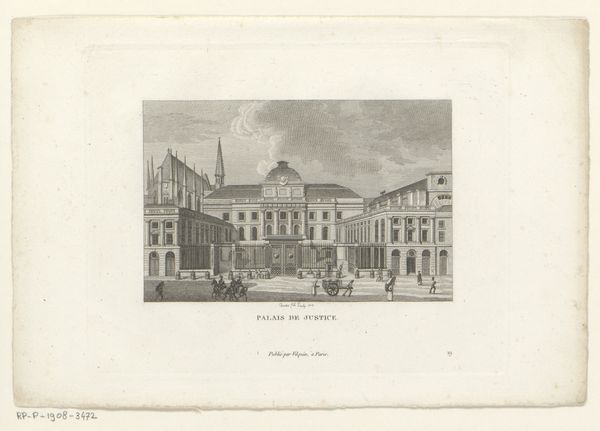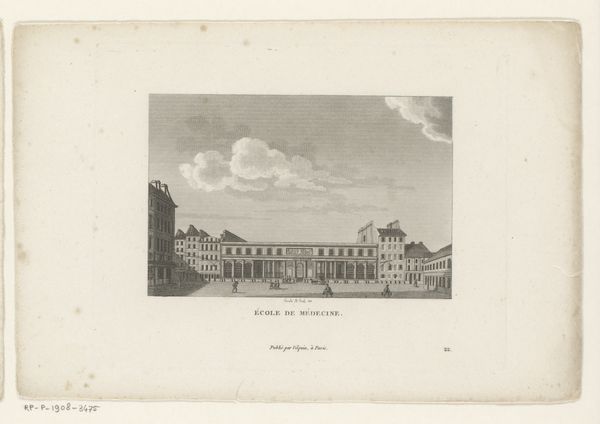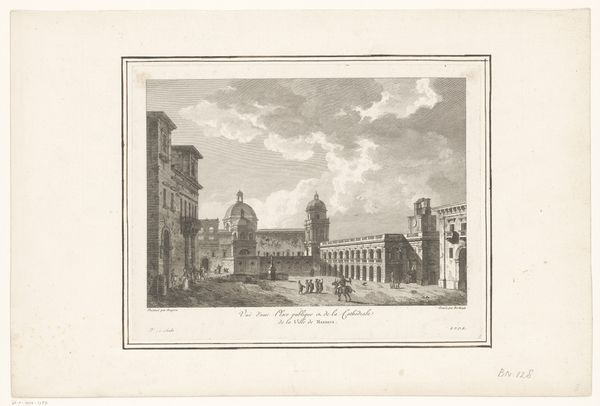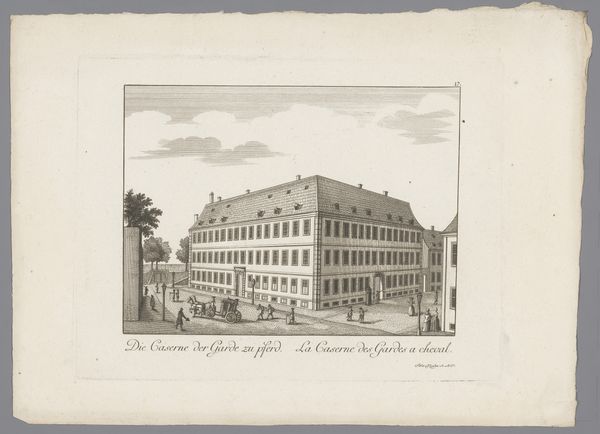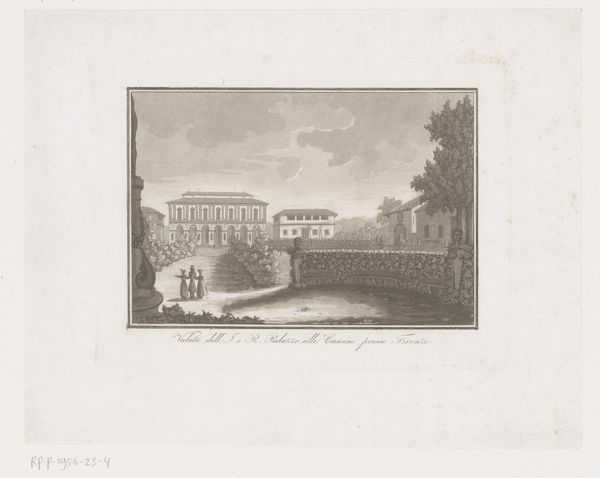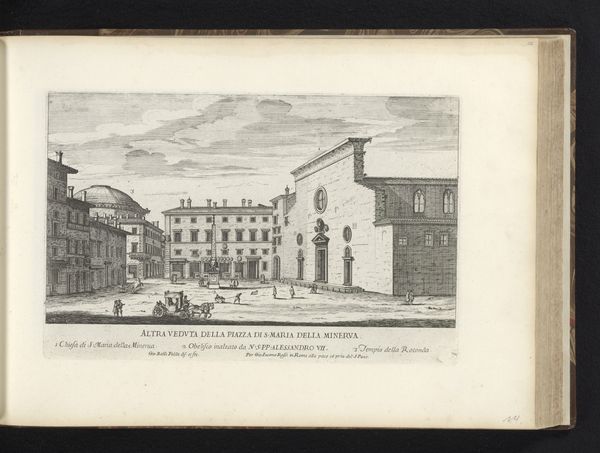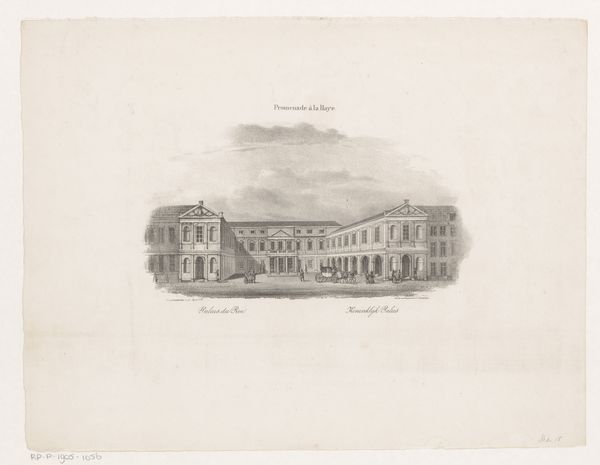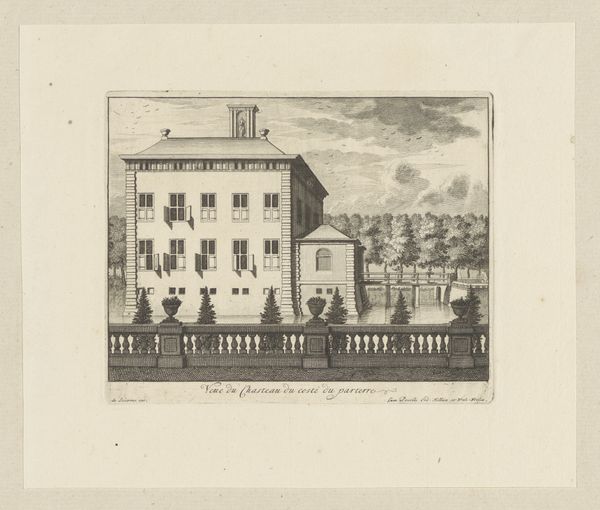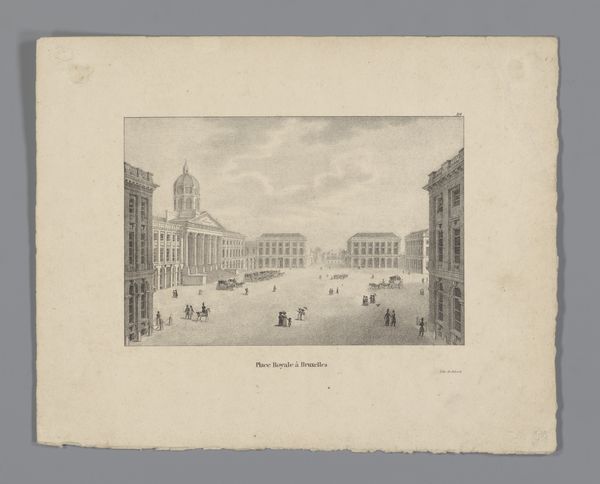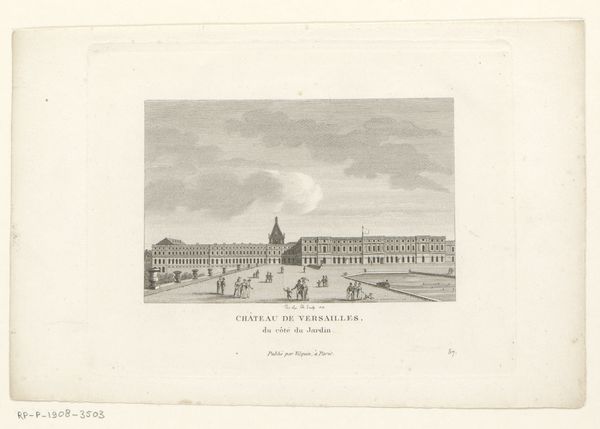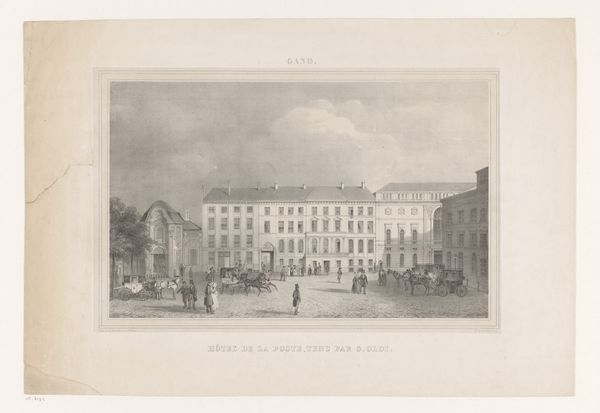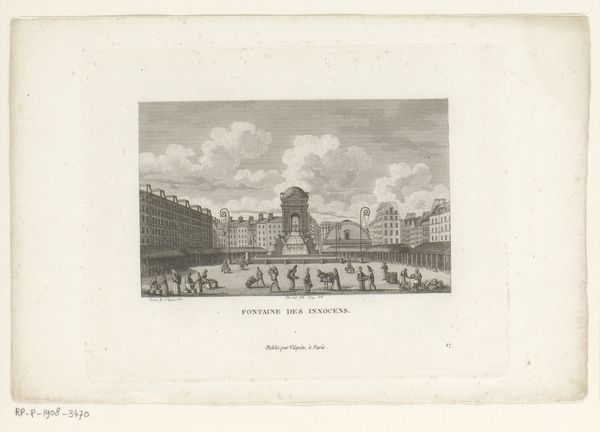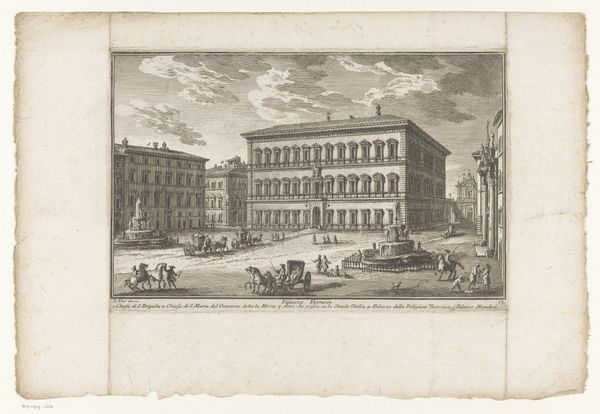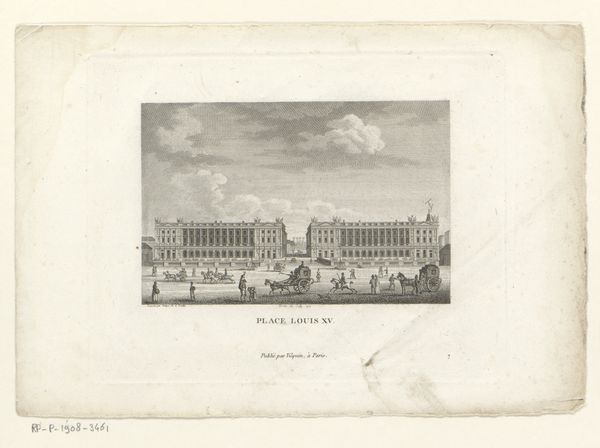
print, engraving
#
neoclacissism
# print
#
old engraving style
#
cityscape
#
engraving
Dimensions: height 124 mm, width 157 mm
Copyright: Rijks Museum: Open Domain
Curator: I’m immediately struck by the sheer symmetry. Everything’s so neatly placed; it's like a stage set, waiting for a grand entrance. There’s something haunting about it though. The greyscale, the blank windows… It's all very controlled and formal. Editor: Indeed. What we're looking at here is an engraving by François Louis Couché, entitled “Gezicht op de Porte Saint-Martin te Parijs,” dating back to 1818. It captures a view of the Porte Saint-Martin, of course, during a period defined by Neoclassicism. The work encapsulates this movement's return to classical antiquity and emphasis on order, clarity, and rationality following the revolutionary period. Curator: Right, order. Like Paris after a period of frenzy. But isn't it funny how even this perfectly symmetrical portal seems to contain some underlying disquiet? I can imagine wandering into that city and losing myself instantly despite how planned everything is! Editor: The image does offer an insight into post-revolutionary France and the socio-political climate which valued stability after years of tumult. This perspective on urban design embodies not only aesthetic values but also political ideologies prevalent in early 19th-century Europe. You could analyze the absence of crowds or political gatherings as an appeal for calm amidst political reconstruction. Curator: A sort of visual… tranquilizer? The city saying, "Everything's fine now. Settle down." Even the carriages seem to be moving slowly and peacefully. It’s propaganda but in a very hushed tone. Do you think the choice of engraving as the medium reinforces this, adding distance to lived reality through a formal, controlled art form? Editor: Precisely. The precision of engraving further enhances the Neoclassical style, mirroring their collective desires for harmony in those early restoration years. Consider also who it leaves out; where are the poor? Curator: Hiding on a side street somewhere, or already swept away by time and poverty, existing in those metaphorical and very real shadows, then. Editor: As an artistic snapshot, “Gezicht op de Porte Saint-Martin” invites reflection not only on its visual merits but on broader questions concerning urban planning, social representation, and political messaging during that period in French history. Curator: This journey with François Louis Couché definitely reframes how I’ll perceive order – be it visual or societal! Editor: Absolutely. It encourages us to look beneath the surface of what seems straightforward in any era or creative expression.
Comments
No comments
Be the first to comment and join the conversation on the ultimate creative platform.
